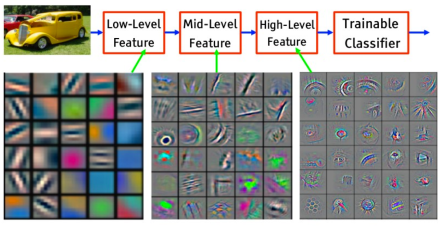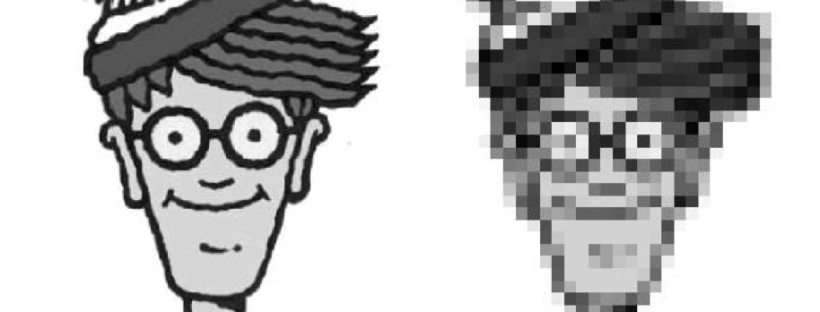What better way for machines to learn than to emulate the human brain? Artificial neural networks, as its name suggests, is a machine learning technique which is modeled after the brain structure. It comprises of a network of learning units called neurons. These neurons learn how to convert input signals (e.g. picture of a cat) into corresponding output signals (e.g. the label “cat”), forming the basis of automated recognition.
Let’s take the example of automatic image recognition. The process of determining whether a picture contains a cat involves an activation function. If the picture resembles prior cat images the neurons have seen before, the label “cat” would be activated. Hence, the more labelled images the neurons are exposed to, the better it learns how to recognize other unlabelled images. We call this the process of training neurons. (For an in-depth explanation, check out our tutorial on Artificial Neural Networks.)
The intelligence of neural networks is uncanny. While artificial neural networks were researched as early in 1960s by Rosenblatt, it was only in late 2000s when deep learning using neural networks took off. The key enabler was the scale of computation power and datasets with Google pioneering research into deep learning. In July 2012, researchers at Google exposed an advanced neural network to a series of unlabelled, static images sliced from YouTube videos. To their surprise, they discovered that the neural network learned a cat-detecting neuron on its own, supporting the popular assertion that “the internet is made of cats”.

One of the neurons in the artificial neural network, trained from still frames from unlabeled YouTube videos, learned to detect cats. Image from Google’s blog.
Biologically-Inspired Model
The technique that Google researchers used is called Convolutional Neural Networks (CNN), a type of advanced artificial neural network. It differs from regular neural networks in terms of the flow of signals between neurons. Typical neural networks pass signals along the input-output channel in a single direction, without allowing signals to loop back into the network. This is called a forward feed.
While forward feed networks were successfully employed for image and text recognition, it required all neurons to be connected, resulting in an overly-complex network structure. The cost of complexity grows when the network has to be trained on large datasets which, coupled with the limitations of computer processing speeds, result in grossly long training times. Hence, forward feed networks have fallen into disuse from mainstream machine learning in today’s high resolution, high bandwidth, mass media age. A new solution was needed.
In 1986, researchers Hubel and Wiesel were examining a cat’s visual cortex when they discovered that its receptive field comprised sub-regions which were layered over each other to cover the entire visual field. These layers act as filters that process input images, which are then passed on to subsequent layers. This proved to be a simpler and more efficient way to carry signals. In 1998, Yann LeCun and Yoshua Bengio tried to capture the organization of neurons in the cat’s visual cortex as a form of artificial neural net, establishing the basis of the first CNN.
CNN Summarized in 4 Steps
There are four main steps in CNN: convolution, subsampling, activation and full connectedness.

The most popular implementation of the CNN is the LeNet, after Yann LeCun. The 4 key layers of a CNN are Convolution, Subsampling, Activation and Fully Connected. Image courtesy: http://www.ais.uni-bonn.de/deep_learning/
Step 1: Convolution
The first layers that receive an input signal are called convolution filters. Convolution is a process where the network tries to label the input signal by referring to what it has learned in the past. If the input signal looks like previous cat images it has seen before, the “cat” reference signal will be mixed into, or convolved with, the input signal. The resulting output signal is then passed on to the next layer.

Convolving Wally with a circle filter. The circle filter responds strongly to the eyes.
Convolution has the nice property of being translational invariant. Intuitively, this means that each convolution filter represents a feature of interest (e.g whiskers, fur), and the CNN algorithm learns which features comprise the resulting reference (i.e. cat). The output signal strength is not dependent on where the features are located, but simply whether the features are present. Hence, a cat could be sitting in different positions, and the CNN algorithm would still be able to recognize it.
Step 2: Subsampling
Inputs from the convolution layer can be “smoothened” to reduce the sensitivity of the filters to noise and variations. This smoothing process is called subsampling, and can be achieved by taking averages or taking the maximum over a sample of the signal. Examples of subsampling methods (for image signals) include reducing the size of the image, or reducing the color contrast across red, green, blue (RGB) channels.

Sub sampling Wally by 10 times. This creates a lower resolution image.
Step 3: Activation
The activation layer controls how the signal flows from one layer to the next, emulating how neurons are fired in our brain. Output signals which are strongly associated with past references would activate more neurons, enabling signals to be propagated more efficiently for identification.
CNN is compatible with a wide variety of complex activation functions to model signal propagation, the most common function being the Rectified Linear Unit (ReLU), which is favored for its faster training speed.
Step 4: Fully Connected
The last layers in the network are fully connected, meaning that neurons of preceding layers are connected to every neuron in subsequent layers. This mimics high level reasoning where all possible pathways from the input to output are considered.
(During Training) Step 5: Loss
When training the neural network, there is additional layer called the loss layer. This layer provides feedback to the neural network on whether it identified inputs correctly, and if not, how far off its guesses were. This helps to guide the neural network to reinforce the right concepts as it trains. This is always the last layer during training.
Implementation
Algorithms used in training CNN are analogous to studying for exams using flash cards. First, you draw several flashcards and check if you have mastered the concepts on each card. For cards with concepts that you already know, discard them. For those cards with concepts that you are unsure of, put them back into the pile. Repeat this process until you are fairly certain that you know enough concepts to do well in the exam. This method allows you to focus on less familiar concepts by revisiting them often. Formally, these algorithms are called gradient descent algorithms for forward pass learning. Modern deep learning algorithm uses a variation called stochastic gradient descent, where instead of drawing the flashcards sequentially, you draw them at random. If similar topics are drawn in sequence, the learners might over-estimate how well they know the topic. The random approach helps to minimize any form of bias in the learning of topics.
Learning algorithms require feedback. This is done using a validation set where the CNN would make predictions and compare them with the true labels or ground truth. The predictions which errors are made are then fed backwards to the CNN to refine the weights learned, in a so called backwards pass. Formally, this algorithm is called backpropagation of errors, and it requires functions in the CNN to be differentiable (almost).
CNNs are too complex to implement from scratch. Today, machine learning practitioners often utilize toolboxes developed such as Caffe, Torch, MatConvNet and Tensorflow for their work.
Interpretation
Similar to how we sometimes find it hard to rationalize our thoughts, the brain-inspired CNN is also hard to interpret due to its sheer complexity. It uses numerous filters, combined in different ways, governed by various activation functions. However, a technique was recently developed to help us observe how a neural network learned to recognize signals.

(Image courtesy: http://www.iro.umontreal.ca/~bengioy/talks/DL-Tutorial-NIPS2015.pdf)
The DeConvolution Neural Net, as its name suggests, dissects training progress at each layer. It examines the first convolution layer, as well as the last fully connected layer. The first layer represents the set of features that the CNN is familiar with and it determines what the basic objects (low level features) that the CNN would be able to detect. On the other hand, the final layer represents how well the features are linked together to form concepts – a clearer separation of concepts implies that the neural network can better distinguish between different concepts without confusion.
Conclusion
Convolutional Neural Net is a popular deep learning technique for current visual recognition tasks. Like all deep learning techniques, CNN is very dependent on the size and quality of the training data. Given a well prepared dataset, CNNs are capable of surpassing humans at visual recognition tasks. However, they are still not robust to visual artifacts such as glare and noise, which humans are able to cope. The theory of CNN is still being developed and researchers are working to endow it with properties such as active attention and online memory, allowing CNNs to evaluate new items that are vastly different from what they were trained on. This better emulates the mammalian visual system, thus moving towards a smarter artificial visual recognition system.
Did you learn something useful today? We would be glad to inform you when we have new tutorials, so that your learning continues!
Sign up below to get bite-sized tutorials delivered to your inbox:
Copyright © 2015-Present Algobeans.com. All rights reserved. Be a cool bean.


6 thoughts on “Convolutional Neural Networks (CNN) Introduction”